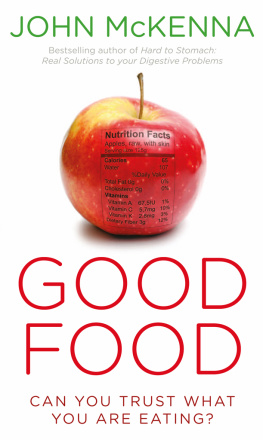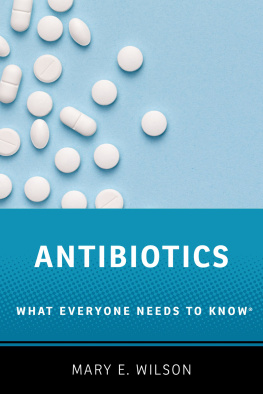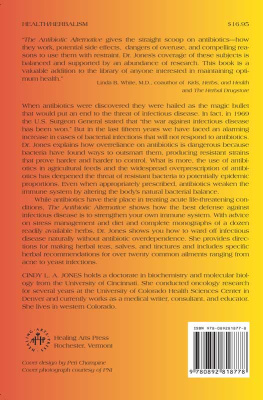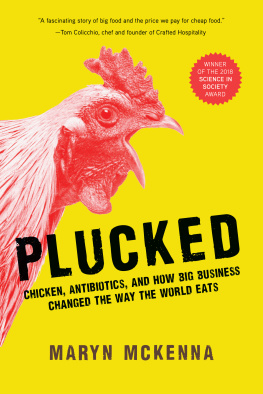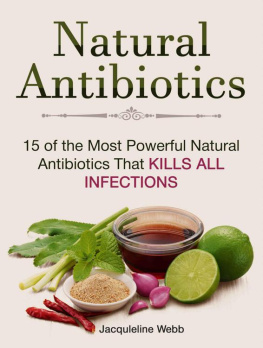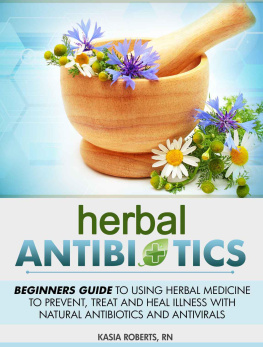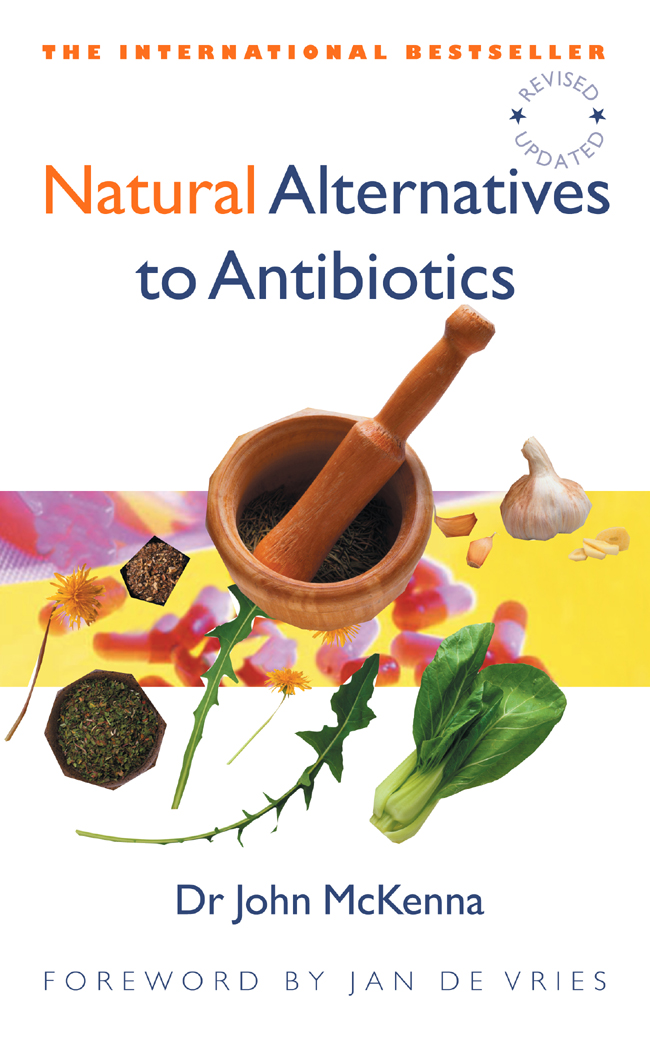Natural Alternatives
to Antibiotics
Dr John McKenna
Newleaf
This book is dedicated to four very special people in my lifeCharity, Jackie, Marianne and Davidmy children.
Contents
Foreword
It was after a talk in Dublin that I first had the pleasure of meeting Dr John McKenna. During our conversation, John told me he was writing this bookits publication could not have come at a more important time. It is a long-awaited and necessary book which addresses many issues and answers many questions.
Nowadays, people have a better understanding of the side effects related to the long-term use of antibiotics. Back in 1958, when I graduated in pharmacy, it was not an issue of public concern. The issue was in my mind even then, however. At that particular time there was an explosion in the use of antibiotics, tranquillisers and sleeping tablets. Since then, development of these drugs has continued unabated and today, when I look at the numerous patients I treat in my clinics, I understand even better what I saw happening in the late fifties.
This book describes the many alternatives available. Echinacea, for example, was recently shown to be one of the best natural antibiotics in a study at the University of Mnchen in Germany. Dr Alfred Vogel promoted Echinacea for more than forty years and I am delighted to see a scientific report validating the great benefits of Echinacea. This report proves that there are natural ways to support and boost the defences of the human body.
Some time ago I was asked to speak to a group of doctors and medical students in Germany. While talking about the immune system, I briefly mentioned a product called Echinaforce, the fresh herb extract from Echinacea purpurea. The doctors in question were very interested in the methods I have been using, during the past thirty-five years, to help human suffering. I was especially pleased when at the end of my lecture one doctor stood up to endorse what I had said about Echinacea. Apparently, while travelling in Brazil she had acquired a nasty throat infection. As there was no pharmacy nearby she was unable to obtain antibiotics, so she bought a bottle of Echinaforce in a simple health food store instead. She took twice the recommended dosage as she believed it could not do the job and found, to her surprise, that her sore throat had eased considerably by evening. Since then she has prescribed Echinacea to many of her patients, with great success.
This clear and concisely written book is a timely reminder of the great possibilities that nature has to offer. Nature is balanced and will always have the power to heal. The many subjects that Dr John McKenna has discussed in this book open the way to a greater recognition and understanding of natural remedies. After all, we are born in nature and have to obey the laws of nature if we want to stay healthy and fit. I am happy to see more and more people throughout the world becoming aware of the natural options available to them, instead of using and abusing synthetic antibiotics.
I am sure that the readers of this book will be impressed and rewarded by the tremendous research and knowledge that has gone in to its publication.
Jan de Vries D.Ho.Med.,
D.O.M.R.O., N.D.M.R.N., D.Ac., M.B.Ac.A.
Preface
Here are the clinical records of a fourteen-year-old boy. Each asterisk () highlights the use of an antibiotic.
Age | Prescription | Type of drug |
9 months | Keflex | Antibiotic |
1 year | Septrin | Antibiotic |
1 year | Piriton | Anti-histamine |
1 year | Pen-V | Antibiotic |
1 year | Bactrim | Antibiotic |
2 years | Bactrim | Antibiotic |
2 years | Keflex | Antibiotic |
2 years | Amoxil | Antibiotic |
2 years | Penbritin | Antibiotic |
3 years | Keflex | Antibiotic |
3 years | Amoxil | Antibiotic |
3 years | Erythroped | Antibiotic |
3 years | Amoxil | Antibiotic |
3 years | Hydrocortisone cream | Steroid |
3 years | Erythroped | Antibiotic |
3 years | Maxolon | Anti-nausea drug |
3 years | Keflex | Antibiotic |
3 years | Hydrocortisone cream | Steroid |
3 years | Vallergan syrup | Anti-histamine |
4 years | Keflex | Antibiotic |
4 years | Keflex | Antibiotic |
4 years | Keflex | Antibiotic |
4 years | Alupent | Bronchodilator |
(to dilate the airways in asthmatics) |
4 years | Keflex | Antibiotic |
4 years | Erythroped | Antibiotic |
4 years | Diprosone cream | Potent steroid |
4 years | Vallergan | Anti-histamine |
4 years | Ceporex | Antibiotic |
5 years | Ceporex | Antibiotic |
5 years | Diprosone cream | Potent steroid |
5 years | Amoxil | Antibiotic |
5 years | Amoxil | Antibiotic |
5 years | Triludan syrup | Anti-histamine |
5 years | Keflex | Antibiotic |
5 years | Ventolin | Bronchodilator |
5 years | Distaclor | Antibiotic |
5 years | Ventolin | Bronchodilator |
5 years | Amoxil | Antibiotic |
5 years | Ventolin | Bronchodilator |
5 years | Amoxil | Antibiotic |
6 years | Hydrocortisone cream | Steroid |
6 years | Fucidin cream | Antibiotic |
6 years | Ceporex | Antibiotic |
6 years | Keflex | Antibiotic |
6 years | Ventolin | Bronchodilator |
6 years | Ventolin | Bronchodilator |
6 years | Ventolin | Bronchodilator |
6 years | Ventolin | Bronchodilator |
6 years | Erythroped | Antibiotic |
This child was given his first antibiotic when he was nine months old. Before he had reached his seventh birthday, he had received no less than


